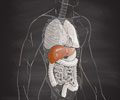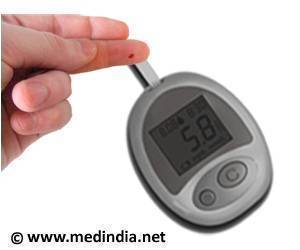Global liver societies have renamed Nonalcoholic Fatty Liver Disease (NAFLD) to Metabolic Dysfunction–Associated Steatotic Liver Disease (MASLD).
- Nonalcoholic Fatty Liver disease (NAFLD) is renamed Metabolic dysfunction–Associated Steatotic Liver Disease (MASLD), and MASH to NASH, by global liver societies
- The new nomenclature classifies SLD (Steatotic Liver Diseases) into four types: MASLD, MetALD, ALD, and cryptogenic SLD //
- The new classification helps to avoid stigmatization among patients and improves diagnosis and treatment of liver diseases
Steatotic (Fatty) Liver Disease
Go to source).
A worldwide panel of 236 doctors, patients, public health, and regulatory professionals reached a consensus that the phrase "nonalcoholic fatty liver disease" can be stigmatizing.
Hence the term "metabolic dysfunction-associated steatotic liver disease," or MASLD, has replaced "nonalcoholic fatty liver disease," reflecting the disease's underlying principles and altering the way that patients are referred to.
The MAFLD Nomenclature
Nonalcoholic fatty liver disease will now be called metabolic dysfunction–associated steatotic liver disease, or MASLD, and Metabolic dysfunction–associated steatohepatitis, or MASH, will replace the term nonalcoholic steatohepatitis, or NASH (2✔ ✔Trusted SourceChanging from NAFLD to MASLD: The new definition can more accurately identify individuals at higher risk for diabetes
Go to source).
The new nomenclature includes the umbrella term steatotic liver disease, or SLD, which includes MASLD and MetALD (Metabolic Alcohol Associated Liver Disease), a term describing people with MASLD who consume more than 140 grams of alcohol per week for women and 210 grams per week for men (3✔ ✔Trusted Source
A multisociety Delphi consensus statement on new fatty liver disease nomenclature
Go to source).
MASLD patients must have cardiometabolic risk factors such as type 2 diabetes, hypertension, obesity, and high cholesterol. Individuals without metabolic parameters and no known cause will be classified under cryptogenic SLD.
So, the umbrella term, SLD-Steatotic Liver Disease, covers:
- MASLD- Metabolic dysfunction–Associated Steatotic Liver Disease - fatty liver with cardiometabolic risk factors that progresses to MASH (Metabolic dysfunction–Associated Steato Hepatitis)
- MetALD- Metabolic Alcohol Associated Liver Disease. MAFLD with alcohol intake
- ALD- Alcohol Associated Liver Disease
- Cryptogenic SLD- Fatty liver without cardiometabolic risk factors and no known cause
Why do we Need to Rename NAFLD to MAFLD?
The modification indicates a change in the way patients and doctors see a condition that impacts up to 30% of adults globally.Preference on Inclusion Criteria:
NAFLD remains a diagnosis of exclusion, defined by the absence of known causes of liver disease (such as, alcohol, hence “non-alcoholic”) and steatosis. A shift towards inclusionary diagnostic criteria - ie, the presence of metabolic dysfunction, rather than the lack of other conditions - better reflects our knowledge of the underlying metabolic dysfunction that typically drives MAFLD.
Providing a definition for the MAFLD patient group facilitates better patient subtyping and opens the door to more effective clinical trials and individualized medication.
No More ‘Fatty’ and ‘Alcohol’ Definitions- Avoids Social Stigma:
By not mentioning alcohol, MAFLD avoids stigmatizing patients and prevents the diagnosis of alcoholic liver disease from competing with MAFLD.
Preliminary survey results showed that a greater percentage of participants (54%) saw "nonalcoholic" as troublesome than stigmatizing terms like "fatty." About sixty-one percent of respondents thought the labels "fatty" and "nonalcoholic" were stigmatizing.
Other factors:
Patients with moderate alcohol use and metabolic liver disease are now included in the MetALD category, which bridges the gap between MASLD and alcohol-related liver disease.
There may be an overlap in the diagnosis of NAFLD and alcohol-related liver disease, and the definition solves the problem of how to categorize with alcohol consumption.
Potential Benefits of Renaming
Positive diagnostic criteria for MAFLD help to establish a precise diagnosis and enable doctors to effectively target patients who are at high risk of complications or other metabolic co-morbidities.While the new terminology largely preserves the existing disease definitions, it allows for alcohol use beyond present limits for nonalcoholic forms of the condition.
With the new MetALD category, disease courses in this important population can be assessed and addressed. Until now, such patients would have been excluded from clinical trials for MASLD, which means that we may not understand how they respond to treatment. This can enhance clinical decision-making and research in pharmacotherapies.
There is a continuum within MetALD where the condition can be viewed as either MASLD or ALD predominate theoretically.
Way Forward with MAFLD
Utilizing MAFLD instead of NAFLD nomenclature has major benefits for patients, research, and clinicians. Widely accepted and devoid of stigma, the new nomenclature and diagnostic standards have the potential to raise awareness and facilitate patient identification.Thus, we argue that the name "MAFLD" is a positive step toward enhancing clinical care, raising public awareness, and reducing the stigma attached to NAFLD diagnosis.
References:
- Steatotic (Fatty) Liver Disease - (https://my.clevelandclinic.org/health/diseases/15831-fatty-liver-disease)
- Changing from NAFLD to MASLD: The new definition can more accurately identify individuals at higher risk for diabetes - (https://www.journal-of-hepatology.eu/article/S0168-8278(23)05164-4/fulltext)
- A multisociety Delphi consensus statement on new fatty liver disease nomenclature - (https://www.journal-of-hepatology.eu/article/S0168-8278(23)00418-X/fulltext)
Source-Medindia
















